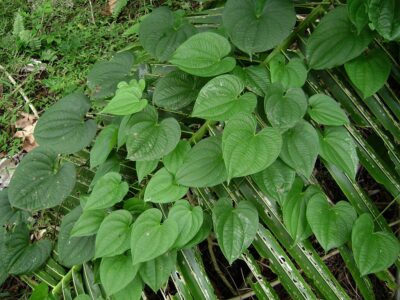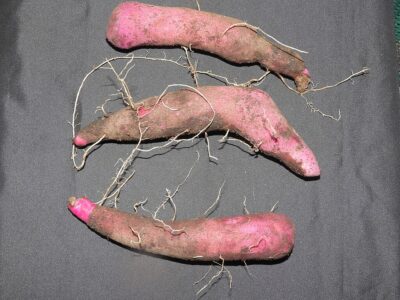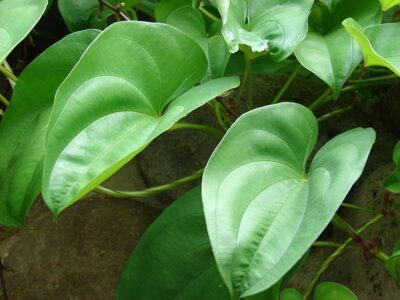
Purple yam
Tauʻolunga, CC BY-SA 3.0, via Wikimedia Commons
Dioscorea alata, often called purple yam, is a tropical climbing vine grown for its large, starchy tubers. Native to Asia but now cultivated across the tropics, it thrives in warm, humid climates and is a key root crop in many traditional farming systems. The tubers can be white, pink, or deep violet—especially the popular “ube” variety in the Philippines—where they’re used in both savory dishes and colorful desserts. With its adaptability and high yield, purple yam is valued for food security, cultural traditions, and growing interest in natural food colorants.
Names
Scientific
Dioscorea alata
English
Greater yam
Purple yam
Ube
Ubi
Water yam
Winged yam
Taxonomy
Order
Dioscoreales
Family
Dioscoreaceae
Genus
Dioscorea
Species
Dioscorea alata (Purple yam)
Basic information and facts
Origin:
Believed to have originated in Southeast Asia, particularly in regions around Myanmar, India, and the Philippines, with ancient cultivation across Asia and the Pacific.
Distribution:
Now widely cultivated in tropical and subtropical regions worldwide, including Africa, the Caribbean, Central and South America, and Oceania.
Annual, biennial, or perennial:
A perennial vine grown as an annual crop for its large underground tubers. It regrows from tubers each season in favorable climates.
Flowers:
Small, greenish or purplish, usually unisexual, with male and female flowers on separate plants (dioecious). Flowering is rare in cultivation.
Leaves:
Heart-shaped (cordate) and opposite, with long petioles and prominent veins. Leaf shape varies with variety and maturity stage.
Fruits:
Capsule fruits develop only when both male and female plants are present and pollinated. Fruiting is uncommon under cultivation.
Climate and weather:
Thrives in hot, humid tropical climates with well-distributed rainfall. Sensitive to frost and waterlogging. Requires a long growing season of 8–11 months.
Pollination:
Natural pollination is by wind or insects, but most cultivated plants are propagated vegetatively and rarely flower or set seed.
Height:
Vines can climb up to 3–10 meters depending on support. Grown on trellises, poles, or trees to maximize aerial growth.
Spacing:
Plants are typically spaced 1 to 1.5 meters apart in rows, with row spacing of about 1–2 meters depending on variety and support system.
Propagation:
Primarily propagated by tuber pieces or small whole tubers called seed yams. True seeds are rarely used due to limited flowering and variable offspring.
Insect pests:
Common pests include yam beetles, scale insects, mealybugs, and aphids. Tuber borers may cause damage underground.
Diseases:
Susceptible to anthracnose (leaf spot), yam mosaic virus, and root rot caused by fungi in poorly drained soils.
Harvesting:
Harvested 8 to 11 months after planting, once vines yellow and die back. Tubers are dug carefully to avoid damage and stored in cool, dry conditions.
Uses:
Cultivated mainly for its starchy tubers, which are boiled, baked, pounded, or processed into flour. Purple-fleshed varieties are used in desserts and confections in Asia and the Pacific.
Crop categories
Root vegetables
Tropical crops
Vegetables
Pictures

Purple yam
Yercaud-elango, CC BY-SA 4.0, via Wikimedia Commons

Purple yam
Forest and Kim Starr, CC BY 2.0, via Wikimedia Commons
